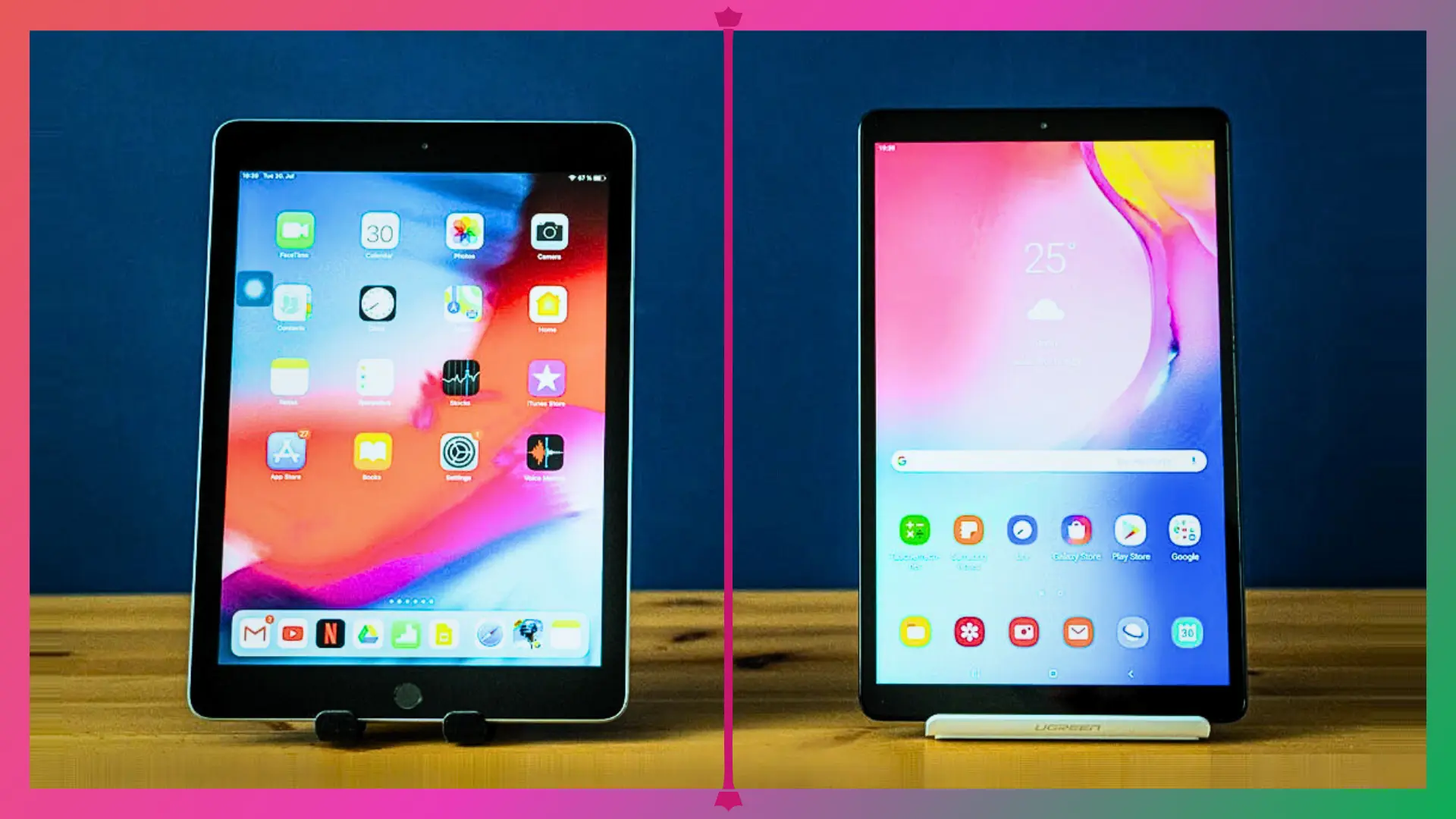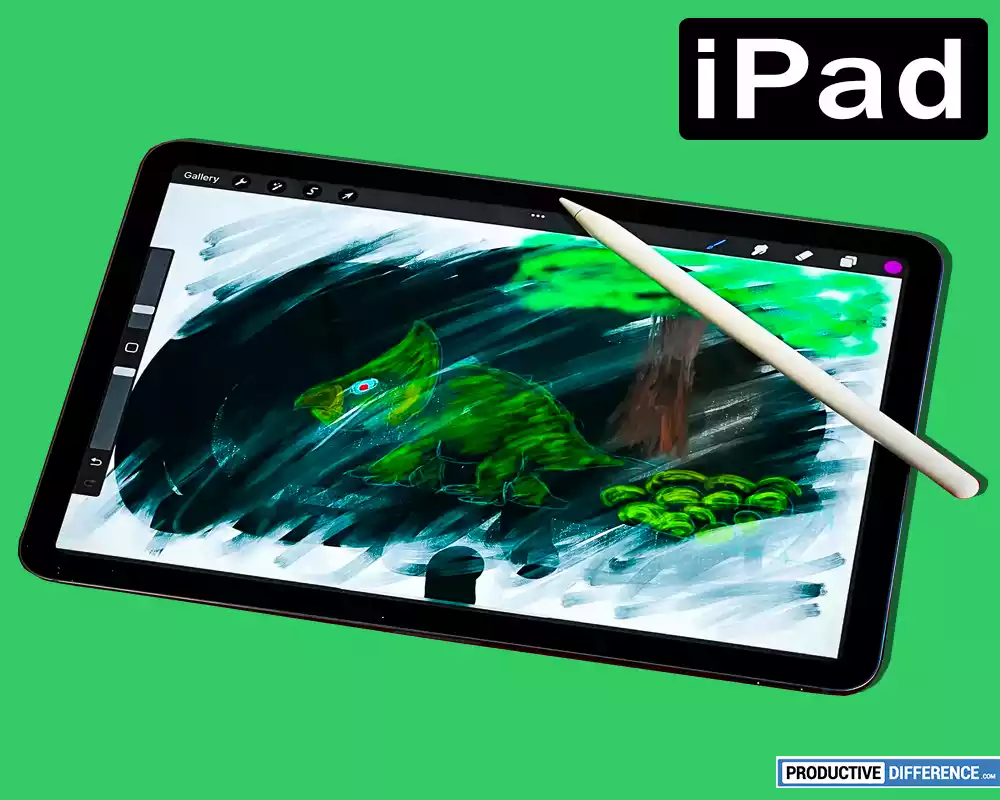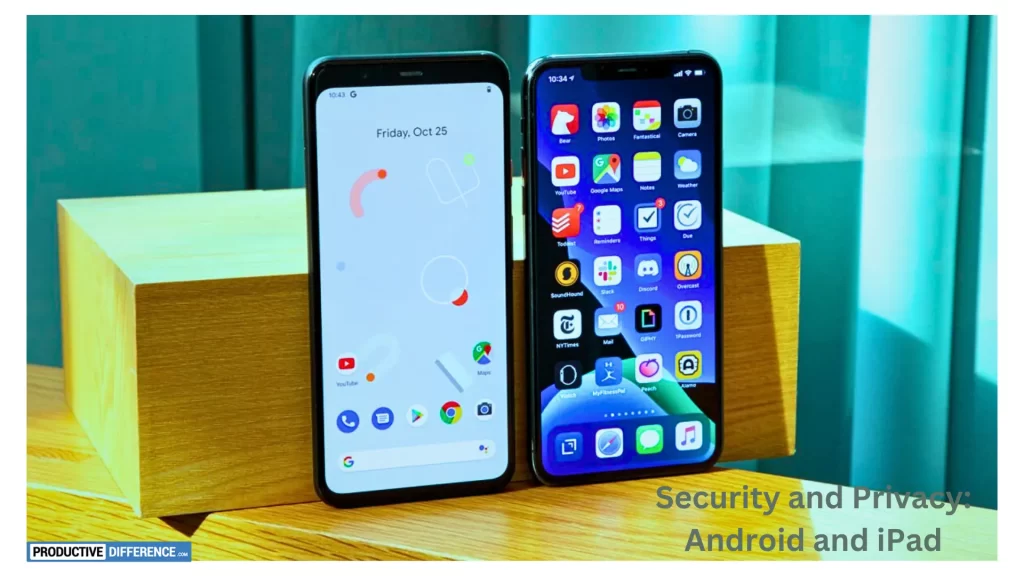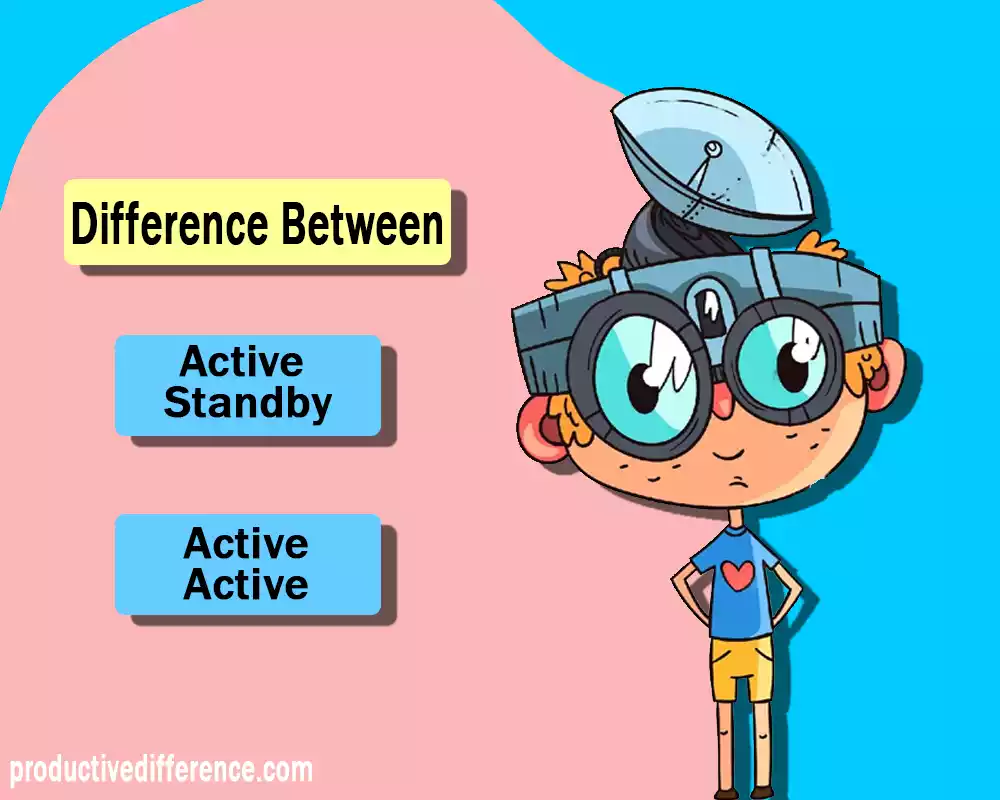Introduction to Android and iPad
Android and iPad are two popular operating systems used in mobile devices. Android which is an open-source operating system and it was developed by Google, stands in stark contrast to iPad from Apple.
Android has earned itself an impeccable reputation for being easily customizable and adaptable, used by numerous manufacturers on a range of devices. Its ecosystem — accessible via Google Play Store — makes downloading applications convenient.

Apple’s line of tablets – specifically the iPad – stands out with an intuitive user experience that prioritizes security and privacy. iPadOS, their operating system, offers access to many preinstalled applications as well as access to an expansive App Store selection specifically optimized for iPad’s larger display screen.
Android and iPad both provide essential web browsing, emailing, social media integration, multimedia playback, and access to productivity tools. Both also support connectivity options like Wi-Fi, Bluetooth, and cellular data so users stay connected everywhere they go.
At its core, choosing between Android and iPad depends entirely on personal preferences, device availability, and individual needs. Android offers more device customization and personalization features; on the other hand, iPad offers a polished experience within the Apple ecosystem.
Pre-history of Android and iPad
Pre-history of Android
Android can be traced back to 2003 when Andy Rubin, Rich Miner, Nick Sears, and Chris White established Android Inc. Their original goal was to develop an advanced operating system for digital cameras but soon realized its immense potential in the emerging smartphone market.
Google acquired Android Inc. in 2005, marking its journey as a mobile operating system. Through Android’s acquisition, they wanted to develop a robust open-source platform capable of competing against existing systems like Symbian and Windows Mobile.

Android was released as Android 1.0 in September 2008. At launch, this initial version included features like notifications and widgets as well as support for third-party applications. Over time, its development rapidly progressed with regular updates bringing improved versions containing significant upgrades or additional capabilities.
Pre-history of iPad
Apple explored tablet-like gadgets in the early 2000s. Steve Jobs, Apple co-founder in the early 2000s envisioned a tablet that could fill the space between laptops and smartphones. The technology at the time and the market were not conducive to such a device.
Apple’s revolutionary iPad technology was first introduced in 2010. This marked the beginning of a revolution in tablet computing. Apple’s App Store allows users to download and install preinstalled apps, as well as access them through a multitouch interface.

Apple’s iPad gained popularity quickly due to the seamless integration of its ecosystem and its user-friendly interface. The subsequent generations of Apple’s iPad offered enhanced performance, improved display quality, Apple Pencil compatibility, and support for multitasking – creating an instantaneous hit among Apple fans.
Both Android and iPad are now integral to the landscape of mobile devices, providing users with a variety of choices and experiences.
Types of Android and iPad
Android and iPad tablets come in different types and models, each catering to specific user preferences and needs.
Let’s explore the various types of Android and iPad tablets available in the market:
Android:
- Standard/Consumer Tablets: These are the most common type of Android tablets designed for general consumers. They come in various screen sizes, ranging from compact 7-inch tablets to larger 10-inch or more devices. Standard Android tablets offer a balance of performance, features, and affordability.
- Gaming Tablets: Gaming-focused Android tablets are designed with powerful hardware specifications and dedicated gaming features. They often feature high-resolution displays, advanced graphics capabilities, and optimized gaming software for an immersive gaming experience.
- Convertible/2-in-1 Tablets: Convertible Android tablets combine the functionality of a tablet with a detachable or foldable keyboard, allowing users to switch between tablet and laptop modes. These tablets are ideal for productivity tasks and offer the flexibility of both touch and traditional keyboard input.
- Rugged Tablets: Rugged Android tablets are built to withstand harsh environments and provide durability in challenging conditions. They are designed with reinforced frames, shock resistance, water and dust resistance, and additional protective features, making them suitable for industries such as manufacturing, logistics, and outdoor activities.
iPad:
- iPad Mini: Its screen measures 7.9 inches for compact usage. The iPad Mini is an easily transportable tablet computer featuring a 7.9-inch display.
- iPad: Apple’s standard iPad features either 9.7 inches or 10 inches. Known for its affordability and performance, making the iPad is ideal for everyday tasks, entertainment, and productivity.
- iPad Air: The iPad Air is a more advanced and premium tablet with a larger display (typically around 10.5 inches) and enhanced features. It offers a higher-performance processor, improved display technology, and compatibility with accessories like the Apple Pencil, making it suitable for content creation and multitasking.
- iPad Pro: The iPad Pro is Apple’s high-end tablet designed for professionals and power users. It features larger displays (11 inches or 12.9 inches) with ProMotion technology for smooth scrolling and advanced features like Face ID, powerful processors, and support for the Apple Pencil and Magic Keyboard. The iPad Pro is favored by artists, designers, and those who require intensive computing power on a tablet.
These are some of the common types of Android and iPad tablets available. Each type offers its own set of features, specifications, and target audience. Choosing the right type of tablet depends on factors such as usage requirements, budget, preferred screen size, and desired features.
Main Difference Between Android and iPad
Smartphones and tablets have become essential elements of daily life. Popular platforms Android and iPad both feature numerous functionalities and features to meet our diverse needs and are highly functional – there are key distinctions between them that might impact which platform best meets them.
This article explores those differences by looking at operating systems, interfaces, app ecosystems, customization options hardware pricing that you should know more about at this point in time if either platform meets them all! You will know which platform best fulfills your preferences by the end of it all!
Operating Systems
- Android: Google created Android as an open-source OS. Known for being highly adaptable and supporting an array of devices from multiple manufacturers, Android features extensive customization options as well as customization choices from its Play Store’s variety of applications for users to personalize their experience with Android devices.
- iPad: iOS, Apple’s own proprietary operating system, powers iPad. iOS’ seamless integration into its ecosystem and emphasis on ease of use and simplicity are hallmarks of its success, and iPad offers seamless synchronization across its products to guarantee optimal user experiences across Apple products.
User Interface
- Android: Android offers a highly configurable user experience. Users can change app icons, home screens, and widgets according to personal taste; its openness allows for greater variety in interface designs that make customization possible.
- iPad: iPad user interfaces tend to be standardized. App icons on its main display grid provide users with an intuitive experience that’s both user-friendly and straightforward. iPad owners will appreciate its simple design which provides easy use.
App Ecosystem
- Android: Android offers an expansive app ecosystem with thousands of apps available in the Google Play Store ranging from free and paid options that cater to different needs and interests. As Android is an open platform it also facilitates more apps being developed and distributed over time.
- iPad: Apple’s App Store, famed for curating top-quality apps, makes iPad users happy. While Android may provide access to more apps than the App Store does, Android guidelines ensure a higher standard of quality; therefore, making Apple an excellent choice when searching for reliable applications to download.
Customization
- Android: Android’s extensive customization features are one of its key benefits. Installing custom launchers and themes can help users customize their device. Android also allows deeper customization at the system level, including enabling custom keyboards and tweaking settings.
- iPad: While iPad doesn’t offer the same level of customization as Android, it provides some degree of personalization. Users can arrange their apps into folders, choose from different wallpapers, and adjust settings to suit their preferences. However, the customization options on iPad are more limited compared to Android.
Hardware Options
- Android: Android offers a wide range of hardware options from various manufacturers. Users can choose from different brands, screen sizes, processors, and other hardware specifications according to their preferences and budget. This diversity ensures that there is an Android device suitable for every user’s needs.
- iPad: Apple designs and manufactures its iPads, so there are fewer hardware choices compared to Android phones. But iPads are well known for their premium build quality, reliable performance, and long battery life – as well as Apple’s focus on hardware-software integration for an exceptional user experience on iPads.
Pricing
- Android: Android devices offer affordable solutions at various price points, making them accessible and flexible enough to suit many different user budgets. Android allows people to find devices within their budget that provide plenty of functionalities and features without breaking their wallets in the process.
- iPad: iPads are generally priced at a premium compared to Android devices. Apple’s focus on premium design, build quality, and performance comes with a higher price tag. While iPads are more expensive, they offer a polished user experience and are often preferred by users seeking a premium tablet experience.
The main difference between Android and iPad lies in their operating systems, user interfaces, app ecosystems, customization options, hardware choices, and pricing. Android provides greater flexibility, customization, and device variety, making it a popular choice for those who value personalization and diverse options.
On the other hand, iPad offers a more streamlined user experience, seamless integration within the Apple ecosystem, and a curated app store, which appeals to users who prioritize simplicity, reliability, and premium design. When choosing between Android and iPad, consider your preferences, budget, and the specific features you require to make an informed decision.
Comparison table Android and iPad
| Comparison Factors | Android | iPad |
|---|---|---|
| Design and Display | Various sizes and form factors | Sleek and premium design |
| Operating System | Android OS | iOS |
| Performance and Hardware | Customizable and diverse | Seamless performance |
| Apps and Ecosystem | Wide range of apps | App Store with curated apps |
| Connectivity and Accessories | Diverse options | Apple ecosystem |
| Battery Life | Varies depending on the device | Long-lasting battery |
| Price and Value | Wide range of price options | Higher price range |
Market demand Android and iPad
Market demand for Android tablets and iPads has long been strong, reflecting their wide popularity across regions and target markets alike. While regional preferences or target segments might dictate which tablet platform holds more allure for certain people, both remain dominant players within the tablet marketplace.
Android tablets have become incredibly popular due to their wide selection and affordable prices, giving consumers ample opportunity to select products from a diverse selection. There is something suitable for every budget as there is such a diverse offering from budget devices with basic features to high-end devices with advanced functions and more!
Android tablets can take advantage of the expansive app ecosystem provided by the Google Play Store and tap into an extensive library of applications designed specifically to serve various needs.
iPads, on the other hand, have quickly established themselves as industry leaders thanks to Apple’s esteemed reputation for quality design and user experience. Premium tablet models such as the iPad feature sleek designs with impressive displays while seamlessly connecting to the iOS ecosystem.
Apple’s emphasis on performance, security, and software optimization has garnered a loyal customer base, including professionals, creatives, and individuals seeking a seamless and user-friendly experience. The iPad also benefits from the curated App Store, which offers a wide range of high-quality applications optimized specifically for iPads.
While Android tablets cater to a wider range of price points and customization options, iPads maintain a strong market demand among users who prioritize premium design, performance, and the Apple ecosystem. Both platforms continue to evolve and introduce new features and innovations, ensuring healthy competition and a vibrant tablet market.
User experience: Android and iPad
When it comes to user experience, both Android and iPad tablets offer unique qualities that cater to different preferences and needs.
Let’s explore the user experience aspects of each platform:
Android User Experience
Android tablets provide users with a highly versatile and personalized user experience, giving them maximum control to personalize the tablets to suit their tastes and create their ideal interface with this high level of personalization. They can personalize the home screen, select widgets from an extensive array, install third-party launchers that give different looks or feel, and customize widgets installed from third parties as needed – it truly creates an experience tailored to individual tastes!
Android tablets also boast seamless integration with Google services and apps, making user accounts sync easily, cloud storage through Google Drive is easily available, Gmail works well with Maps, etc, plus there is the Google Play Store offering thousands of applications ranging from productivity tools to entertainment applications to enhance tablet user experiences further.
iPad User Experience
iPads deliver an engaging user experience characterized by simplicity, intuitiveness, and tight integration within an ecosystem. Apple’s iOS offers a polished yet user-friendly user interface across all iPad models; optimized for touch interaction for ease of navigation and interactivity with their tablet device.
Apple devices such as iPhones, Macs, and Apple Watches integrate seamlessly with each other for an enjoyable user experience with iPad. Users can seamlessly switch devices without losing content they shared between devices through Handoff/Continuity features; Additionally, The App Store features apps specifically optimized for iPad delivering premium experiences to its customers.
iPads are known for their superior hardware-software optimization and flawless user experience, working perfectly within the iOS ecosystem to offer users an enjoyable user journey. Features like Split View and Slide Over help users multitask efficiently on their iPads.
Android tablets offer a highly customizable user experience, allowing users to personalize their devices and benefit from the extensive Google app ecosystem. On the other hand, iPads provide a user-friendly and integrated experience within the Apple ecosystem, focusing on simplicity, performance, and a curated selection of optimized applications. The choice between Android and iPad ultimately depends on the user’s preferences for customization, ecosystem integration, and the specific use cases they prioritize.
Price and Share value: Android and iPad
When it comes to user experience, both Android and iPad tablets offer unique qualities that cater to different preferences and needs.
Let’s explore the user experience aspects of each platform:
Android User Experience
Android tablets provide a user experience that is highly customizable and flexible. Android gives its users the power to fully personalize their tablets to fit their individual tastes. Users have complete freedom in customizing the home page and adding widgets as they see fit – as well as installing third-party launchers to modify its look and feel further. This level of customizability enables individuals to build personalized interfaces tailored directly toward them.
Android tablets feature seamless integration with Google services and applications, enabling users to easily synchronize accounts, use Google Drive for cloud storage needs and experience Gmail, Maps, and other Google services seamlessly. In addition, there’s the Google Play Store with its vast selection of applications from productivity tools to entertainment ones – providing even further options to enhance one’s tablet experience!
iPad User Experience
iPads provide users with an experience defined by simplicity, intuitiveness, and tight integration into Apple’s ecosystem. Apple’s iOS is user-friendly across all iPad models; designed specifically to facilitate touch interaction for easy navigation and interaction between tablets.
Apple ecosystem integration ensures an enjoyable user experience on iPad. Users can seamlessly switch between devices, share content between devices, and make use of Handoff/Continuity features without interruption or disruption; with over 300 applications specifically optimized for iPad available from App Store and offering high-quality experiences to customers.
Additionally, iPads are known for their smooth performance and excellent hardware-software optimization. The devices are designed to work seamlessly with the iOS ecosystem, providing a cohesive and reliable user experience. The intuitive multitasking features, such as Split View and Slide Over, enhance productivity and allow users to efficiently multitask on their iPads.
Android tablets offer a highly customizable user experience, allowing users to personalize their devices and benefit from the extensive Google app ecosystem. iPads provide a user-friendly and integrated experience within the Apple ecosystem, focusing on simplicity, performance, and a curated selection of optimized applications. The choice between Android and iPad ultimately depends on the user’s preferences for customization, ecosystem integration, and the specific use cases they prioritize.
The future probability of Android and iPad
The future probability of Android and iPad tablets can be assessed based on current trends, market dynamics, and technological advancements. While it’s challenging to predict with certainty, we can consider several factors that may influence the prospects of both platforms
Android:
- Market Dominance: Android tablets currently enjoy a significant market share due to their diverse range of options, affordability, and wide availability. This market dominance is likely to continue in the future, as Android manufacturers continue to innovate and cater to various consumer segments.
- Software Advancements: The Android operating system evolves with each iteration, introducing new features, improved performance, and enhanced security. As Android continues to refine its software, it can attract more users and retain its position as a leading tablet platform.
- App Ecosystem: The Google Play Store offers a vast selection of applications for Android tablets. As developers continue to create and optimize apps for the Android platform, it enhances the overall user experience and attracts more users to Android tablets.
- Integration with Other Devices: Android’s compatibility and integration with other devices, such as smartphones and smart home devices, contribute to its appeal. This interoperability can drive future growth as the Internet of Things (IoT) ecosystem expands.
iPad:
- Brand Reputation: Apple’s brand reputation for quality, design, and user experience gives iPads a competitive edge. Apple’s strong brand loyalty and customer base contribute to the sustained popularity of iPads.
- Ecosystem Integration: The seamless integration within the Apple ecosystem, including other Apple devices and services, is a significant advantage for iPads. The continued expansion and refinement of the ecosystem can further enhance the value proposition of iPads.
- Software and Hardware Innovations: Apple consistently introduces new features, technologies, and hardware advancements in their iPads. These innovations, coupled with ongoing software updates, ensure that iPads remain at the forefront of the tablet market.
- Enterprise and Education Adoption: iPads have gained significant traction in the enterprise and education sectors due to their reliability, security features, and robust management capabilities. Continued growth in these sectors can contribute to the future success of iPads.
While both Android and iPad tablets are likely to maintain their market presence, the future probabilities may depend on various factors such as consumer preferences, technological advancements, competition, and market trends. Both platforms must continue offering compelling features, performance improvements, and ecosystem enhancements to stay competitive and meet evolving user needs.
The most popular device between Android and iPad
Android tablets and iPads are both popular, and they have an important presence in the tablet market. The popularity of the platforms can vary based on factors like region, target market, and audience.
Android
Android tablets enjoy widespread popularity due to several reasons:
- Diverse Options: Android tablets are available in a wide range of options, catering to different price points, sizes, and specifications. This diversity allows consumers to choose a tablet that suits their budget and requirements.
- Customization: Android provides a high level of customization, allowing users to personalize their tablets with various themes, widgets, and launchers. This flexibility appeals to users who prefer a tailored and unique user experience.
- Affordability: Android tablets often offer more budget-friendly options compared to iPads, making them accessible to a larger audience. The availability of affordable Android tablets contributes to their popularity, especially in emerging markets.
- Google Play Store: Google Play Store boasts an enormous variety of applications – both paid and free – designed to enrich users’ user experiences on Android tablets. By providing such a diversity of offerings, the store attracts even more consumers toward Android tablets.
iPad
iPads, on the other hand, have their own popularity and strengths:
- Brand Reputation: Apple’s brand reputation for quality, design, and user experience has garnered a loyal customer base. Many consumers trust Apple’s products and perceive iPads as premium devices.
- Ecosystem Integration: iPads seamlessly integrate with other Apple devices and services, creating a cohesive ecosystem. This integration appeals to users who already own Apple devices and value the convenience of a unified experience.
- App Store and Optimized Apps: The App Store offers a curated selection of high-quality applications specifically designed for iPads. These optimized apps, along with Apple’s strict app review process, contribute to a smoother and more reliable user experience.
- Enterprise and Education Adoption: iPads have gained significant traction in the enterprise and education sectors due to their reliability, security features, and robust management capabilities. This adoption has contributed to the popularity of iPads in specific market segments.
Both Android and iPad tablets have their own popularity and cater to different segments of consumers. Android tablets excel in offering a wide range of options and customization, while iPads are known for their brand reputation, ecosystem integration, and optimized apps. The choice between Android and iPad often comes down to personal preferences, budget considerations, and specific use cases.
Design and long-lasting: Android and iPad
When it comes to design and long-lasting performance, both Android and iPad tablets offer distinct qualities that cater to different preferences and needs.
Design
Android: Android tablets come in all sorts of shapes, sizes, and designs that provide users with plenty of choices. Each manufacturer provides their own aesthetic features so users can find one to meet their style preferences; whether that means opting for something compact and portable like the Amazon Fire tablet or something larger with detachable keyboard features like Samsung Tab 10.1 – there’s sure to be one perfect for you.
iPad: iPads are known for their sleek and premium design. Apple places a strong emphasis on aesthetics, and iPads feature a minimalist, elegant design that showcases the device’s high-quality build. From the slim profile to the seamless integration of hardware and software, iPads exude a sense of sophistication.
Long-lasting Performance:
Android: Android tablets offer a diverse range of hardware options, allowing users to choose devices that meet their performance needs. While the longevity of performance may vary depending on the specific tablet model and its hardware components, many Android tablets are designed to deliver reliable and long-lasting performance. Manufacturers often optimize their software to ensure efficient resource utilization and power management, extending the battery life and overall lifespan of the device.
iPad: iPads are renowned for their seamless performance and longevity. Apple’s tight integration of hardware and software, combined with their stringent quality control, contributes to the exceptional performance and longevity of iPads. iPads are known to offer smooth multitasking, fast app loading times, and reliable performance even after several years of use. Additionally, Apple’s focus on software updates ensures that older iPad models continue to receive the latest features and security enhancements, further extending their longevity.
Android tablets provide users with numerous design choices to fit any taste, while iPads stand out with their sleek and premium look. In terms of long-term performance, both Android and iPad tablets seek to deliver reliable experiences – Androids boast diverse hardware choices while iPads benefit from Apple’s careful hardware/software integration process and ongoing software support services – but ultimately your choice between either depends on personal requirements.
Security and Privacy: Android and iPad

Both Android and iPad tablets take steps to protect user data in a safe digital environment but with significant variations between their approaches.
Android :
Android tablets prioritize security and privacy through the following features:
- Google Play Protect: Android tablets benefit from Google Play Protect, a security feature that scans apps on the Google Play Store for potential threats, including malware and harmful behavior. This helps mitigate the risk of installing malicious apps on the device.
- Permissions System: Android tablets feature an ingenious permissions system that gives users complete control over which applications may access certain parts of their data and privacy. Users can review each app individually before authorizing permission requests – giving more control to you over their personal information and privacy!
- Security Updates: Android tablets receive regular security updates from both the device manufacturers and Google. These updates include patches to address vulnerabilities and enhance device security. However, the timely delivery of security updates can vary depending on the device manufacturer and model.
- Third-Party Security Apps: Installing trusted third-party apps to enhance security is an option. They can include features such as antivirus scanning, tracking of devices, or data encryption.
iPad:
iPads prioritize security and privacy through the following features:
- App Store Review Process: Apple’s App Store reviews are rigorous to ensure all apps adhere to Apple’s stringent privacy and security guidelines and meet them. Apple employs stringent review processes that check all applications against these strict standards for privacy and security compliance before being accepted onto its storefront.
- Secure Enclave and Face ID/Touch ID: iPads incorporate hardware security features such as the Secure Enclave and biometric authentication (Face ID or Touch ID). These technologies enhance device security by securely storing sensitive information and providing secure, convenient authentication methods.
- System Integrity Protection: iPads include System Integrity Protection, which safeguards critical system files and directories from unauthorized modifications. This helps protect against malware and unauthorized access to the device’s core components.
- Regular iOS Updates: Apple provides regular iOS updates to address security vulnerabilities and deliver new security features. These updates are often available to a wide range of iPad models, ensuring that users can benefit from the latest security enhancements.
Both Android and iPad tablets prioritize security and privacy. Android tablets offer a flexible permissions system and Google Play Protect, while iPad tablets benefit from Apple’s strict app review process, hardware security features, and regular iOS updates. Users should also consider their own habits, such as downloading apps from trusted sources and practicing good security practices, to ensure a secure and private tablet experience.
Android and iPad which one is best for gaming
Android and iPad tablets both provide ample opportunities for gaming experiences, iPads tend to be the go-to device among enthusiasts due to various reasons
- Hardware Performance: iPads are known for their powerful processors and graphics capabilities, offering excellent performance for gaming. The combination of high-performance processors, optimized software, and dedicated gaming features allows iPads to handle graphically demanding games smoothly.
- Gaming Optimization: Many game developers prioritize iOS and release their games on the App Store first or exclusively. As a result, iOS versions of popular games often receive timely updates and optimizations, providing a better gaming experience on iPads.
- Large Screens: iPads typically have larger screens compared to most Android tablets. The spacious display enhances the immersive gaming experience, allowing for better visibility and more precise touch controls.
- Accessories and Apple Arcade: iPads are compatible with gaming accessories such as game controllers, providing a console-like gaming experience. Additionally, Apple Arcade, a subscription-based gaming service, offers a curated collection of high-quality games optimized for iOS devices, including iPads.
While Android tablets also offer a wide range of gaming options.
There are a few factors that may impact the gaming experience:
- Hardware Fragmentation: The Android ecosystem is fragmented, with a variety of manufacturers and hardware specifications. This fragmentation can result in inconsistent gaming performance across different Android devices, as not all tablets are equipped with high-performance hardware.
- App Optimization: Although the Google Play Store offers a vast selection of games, not all games are optimized for Android tablets. Some games may not be fully optimized or may not take advantage of the specific features and capabilities of Android tablets.
- Gaming Accessories: While Android tablets support gaming accessories, such as game controllers, the level of compatibility and availability of accessories may vary compared to the iPad ecosystem.
Both Android and iPad tablets offer a wide variety of gaming experiences, and the best choice for gaming ultimately depends on personal preferences, the specific games you enjoy, and any ecosystem preferences you may have. It’s recommended to research the specific games you want to play and consider the performance, game availability, and gaming accessories compatibility when making your decision.
Conclusion
Android and iPad tablets have their own strengths and advantages, catering to different user preferences and needs. Android offers a wide range of options, including various sizes, form factors, and price points. They provide flexibility, customization, and affordability, making them appealing to a broad audience. The Android ecosystem offers a diverse selection of apps and allows for a high level of personalization. Android tablets also benefit from market dominance and strong integration with other Android devices and services.


